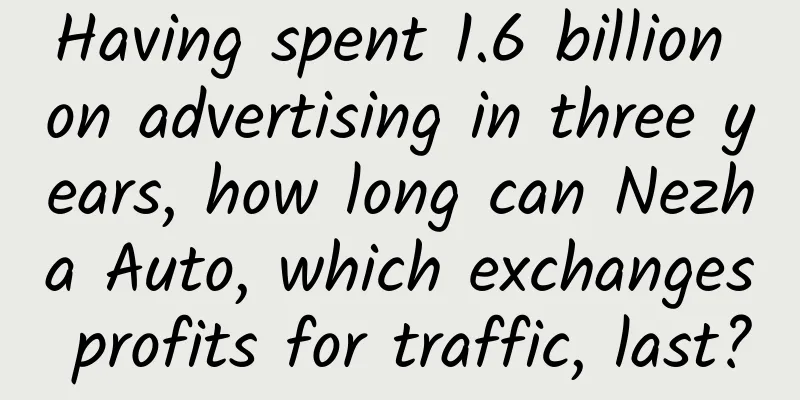Nothing new under the dome? Why not look at the tech startup boom under the haze?

|
December 21st was the sixth day after Beijing launched its first red alert for severe air pollution in 2016. Currently, nearly two-thirds of the country is shrouded in this terrible smog. While the country is waiting for the wind to blow, smog is a new outlet for some technology companies. The Wall Street Journal published an article saying that because China is deeply troubled by air pollution, consumers are no longer satisfied with masks and air purifiers, and they have begun to turn their attention to wearable devices to prevent smog. This has brought new business opportunities to China's technology startups. Why not find a new way to make money on smoggy days? In the recent days of smog, the first person to say "I can't stand it anymore" was Luo Yonghao, CEO of Smartisan Technology. Today, a netizen interacted with Luo Yonghao on Weibo, expressing his hope that Smartisan Technology would make an air purifier. Later, Luo Yonghao forwarded the netizen's Weibo and said "Okay, it's a deal." Perhaps it won't be too long before we can buy Smartisan brand air purifiers. In the home appliance market, air purifiers become very popular in spring and winter. According to monitoring data from Aowei Cloud Network, the online retail volume of air purifiers increased by 23.5% year-on-year in October, and the retail volume in November increased by 67.7% year-on-year. Today, the air purifier market is dominated by domestic, Japanese, Korean, European and American brands. In the brand competition during the peak season of air purifiers this year, the performance of domestic brands is gradually getting better. In October, domestic brands accounted for 27.6% of the retail volume of the air purifier industry. In November, the share continued to rise, and the retail volume accounted for 35.2%. Among domestic brands, Xiaomi is the first technology company to benefit from the smog. In 2014, Xiaomi launched its first generation of air purifiers, which subsequently became the most popular product in the Xiaomi ecosystem. So far, Xiaomi has launched three generations of air purifiers, with a total sales volume of more than 2 million units. According to a Xiaomi air purifier filter supplier in Shanghai, the profit margins of air purifier products are astonishingly high. A product that sells for three to four thousand yuan only costs about one thousand yuan, and some even cost a hundred yuan. The principle is nothing more than a fan plus a filter, and the quality mainly depends on the filtering capacity and purification speed. For an Internet TV or mobile phone of the same price, the manufacturer may have to pay hundreds of yuan to attract users. In comparison, air purifiers can be considered a highly profitable product. So instead of struggling to sell mobile phones, Luo Yonghao might as well take advantage of the haze to sell some air purifiers. According to the owner of an auto supplies store, "The car air purifiers sold in our store range in price from more than 1,000 to more than 3,000 yuan. We can sell dozens of them a day. The ones that cost more than 1,000 yuan have been out of stock for two days. The supply is simply insufficient." In addition to air purifiers, there are also a large number of wearable air purifiers that look like "biochemical gas masks" on the market. There are head-mounted, helmet-mounted, arm-binding, brooch-mounted, neck-hanging, etc. A simple search on Taobao will reveal dozens of styles. Of course, their sales are far less than those of the non-smart 3M masks. There is not enough independent research on the effectiveness of these new anti-smog tools. Mintel analyst Li Lindi said, "Chinese consumers are most concerned about whether the product is effective. If it is effective, they are willing to spend more money." These wearable anti-smog devices are bought by consumers and hung on their bodies like amulets to prevent smog. But when you walk on the street, it is rare to see people wearing these wearable devices, because it looks not only unfashionable but also a bit stupid. A report shows that professional masks with air valves can reduce PM2.5 by about 90%. In other words, if the outdoor pollution index is 500, wearing a mask can reduce the pollution index of the air entering the nasal cavity to about 50, which is still unhealthy, but cheap and convenient. Judging from the current situation, anti-smog wearable devices are still a false proposition. Just like VR glasses, consumers have not been pushed to that point yet. What are the tech giants doing these days? Although businesses can make profits in extremely polluted weather, if you ask Lei Jun, "Are you really willing to make money that is tainted with the 'smell of haze'?" I believe he would also choose a blue sky and white clouds rather than a popular air purifier. As technology giants with social responsibilities, this is perhaps the time when their new technologies need to step forward. Apple recently disclosed a patent for an embedded sensor that can detect gases and liquids. If used in smart electronic devices such as iPhone and Apple Watch, it can remind users of dangerous elements such as smog in the surrounding environment. According to professional organizations, the air quality monitoring market will grow by 8.5% annually in the next five years, reaching a market size of US$5.66 billion. It can be predicted that the market for air quality prediction will also grow. For example, this winter, the Beijing government used IBM and Microsoft's forecasting tools to warn of smog. Both IBM and Microsoft's monitoring principles combine traditional atmospheric chemical physics models with data-based statistical tools (such as machine learning) to make more accurate predictions in a shorter time. But it is not enough to just monitor the smog. There is always a feeling that "looking at the data makes things worse". In this situation, some new energy projects have also begun to rise, such as new energy vehicles. According to a report from the Academy of Sciences, the smog components in Beijing mainly come from automobile exhaust emissions. The excessive emissions caused by the rapid development of passenger cars are one of the culprits of smog weather. This year, the automotive industry has been undergoing a surging reform, with keywords such as cross-border car manufacturing, new energy, driverless driving, and shared cars appearing frequently. Under the haze, the new energy "car-making trend" has suddenly emerged. In addition to traditional automobile manufacturers such as BAIC, Changjiang Automobile, and Great Wall, there are also many Internet companies joining in this car-making camp, such as LeTV, Weilai, and ZTE. Even Gree Chairman Dong Mingzhu announced that she would join hands with Wanda Wang Jianlin to build cars, which was hyped for a while. Wang Dingding, professor of economics at the National School of Development at Peking University, once said, can we induce new technologies to fight smog? Of course we can. The problem is that this is the current situation of China's economic development. Western society is responsible for research and development while China is responsible for manufacturing. Smog is a Chinese phenomenon, and Western R&D departments have no enthusiasm for developing new technologies to fight smog. Therefore, China must, for real this time, independently develop technologies to fight smog. In the field of new energy vehicles, Apple has retreated and Tesla has lost money, but in this round of technological competition, Chinese companies have a unique background. With the help of the lingering smog, China's electric vehicle industry may flourish. Of course, the topic of smog is a bit like a "menstrual patch". It comes once a year, and when the wind comes, all the illusions will be blown away. As a winner of Toutiao's Qingyun Plan and Baijiahao's Bai+ Plan, the 2019 Baidu Digital Author of the Year, the Baijiahao's Most Popular Author in the Technology Field, the 2019 Sogou Technology and Culture Author, and the 2021 Baijiahao Quarterly Influential Creator, he has won many awards, including the 2013 Sohu Best Industry Media Person, the 2015 China New Media Entrepreneurship Competition Beijing Third Place, the 2015 Guangmang Experience Award, the 2015 China New Media Entrepreneurship Competition Finals Third Place, and the 2018 Baidu Dynamic Annual Powerful Celebrity. |
<<: The difficulty in reducing car weight lies in the manufacturer's facilities
Recommend
Learn how to optimize information flow ads in one article! Applicable to all industries
Many friends asked: I have been working as an opt...
Tips for cold start operation and promotion of Tik Tok account!
“It’s hard to create a new Douyin account now!” R...
Hyundai Motor participates in CES Asia 2018 to strengthen cooperation in AI and autonomous driving
On June 13, Hyundai Motor participated in the &qu...
How to optimize account structure knowledge? What is the basic structure of a bidding account?
Many people don’t know how to optimize a Baidu pr...
How does “Duoduo Orchard” achieve gamification growth for Pinduoduo?
"Duoduo Orchard" is a casual social gam...
7 marketing techniques to leverage momentum!
After Erke became famous because of its donations...
The new Three Kingdoms of the display industry: Japanese companies retreated, Korean companies dominated OLED, and Chinese companies broke through Mini LED
In today's international competition, high te...
Audi's first pure electric SUV e-tron will be launched next year, a major innovation to change the bad habit of false labeling in the electric vehicle market
In the chess game of new energy vehicles in China...
Patients describe themselves: What does it feel like after having two positives? Experts suggest...
Recently, there have been many cases of infection...
There is no light in the deep sea, so the eyes of animals have degenerated? In fact, they are all masters of using light
There are many kinds of life on Earth, and the un...
WeChat Mac version Beta 3.0.0.1 internal test: you can browse Moments
IT Home reported on March 11 that according to ne...
Has Apple's design philosophy really gone astray by sacrificing practicality for simplicity?
Once upon a time, Apple was known for its product...
Why is Kunqu Opera the “ancestor of all operas”?
Kunqu Opera is the most representative national a...
New media operation: 4 suggestions on new media writing!
On the one hand, self-media people write public a...
New media operators must survive by relying on thinking, not skills!
Skills are the foundation of life, and thinking i...









